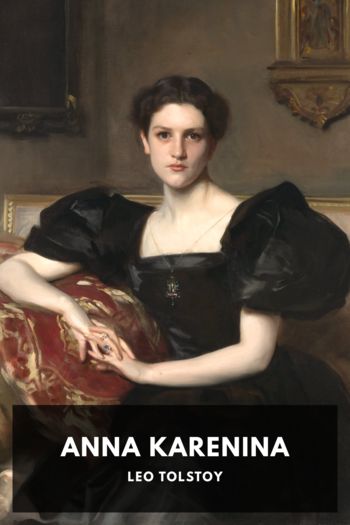What Is Art? Leo Tolstoy (good books to read for 12 year olds TXT) 📖

- Author: Leo Tolstoy
Book online «What Is Art? Leo Tolstoy (good books to read for 12 year olds TXT) 📖». Author Leo Tolstoy
The variety of fresh feelings flowing from religious perception is endless, and they are all new, for religious perception is nothing else than the first indication of that which is coming into existence, viz. the new relation of man to the world around him. But the feelings flowing from the desire for enjoyment are, on the contrary, not only limited, but were long ago experienced and expressed. And therefore the lack of belief of the upper classes of Europe has left them with an art fed on the poorest subject-matter.
The impoverishment of the subject-matter of upper-class art was further increased by the fact that, ceasing to be religious, it ceased also to be popular, and this again diminished the range of feelings which it transmitted. For the range of feelings experienced by the powerful and the rich, who have no experience of labour for the support of life, is far poorer, more limited, and more insignificant than the range of feelings natural to working people.
People of our circle, aestheticians, usually think and say just the contrary of this. I remember how Gontchareff, the author, a very clever and educated man but a thorough townsman and an aesthetician, said to me that after Turgenev’s Memoirs of a Sportsman there was nothing left to write about in peasant life. It was all used up. The life of working people seemed to him so simple that Turgenev’s peasant stories had used up all there was to describe. The life of our wealthy people, with their love affairs and dissatisfaction with themselves, seemed to him full of inexhaustible subject-matter. One hero kissed his lady on her palm, another on her elbow, and a third somewhere else. One man is discontented through idleness, and another because people don’t love him. And Gontchareff thought that in this sphere there is no end of variety. And this opinion—that the life of working people is poor in subject-matter, but that our life, the life of the idle, is full of interest—is shared by very many people in our society. The life of a labouring man, with its endlessly varied forms of labour, and the dangers connected with this labour on sea and underground; his migrations, the intercourse with his employers, overseers, and companions and with men of other religions and other nationalities; his struggles with nature and with wild beasts, the associations with domestic animals, the work in the forest, on the steppe, in the field, the garden, the orchard; his intercourse with wife and children, not only as with people near and dear to him, but as with co-workers and helpers in labour, replacing him in time of need; his concern in all economic questions, not as matters of display or discussion, but as problems of life for himself and his family; his pride in self-suppression and service to others, his pleasures of refreshment; and with all these interests permeated by a religious attitude towards these occurrences—all this to us, who have not these interests and possess no religious perception, seems monotonous in comparison with those small enjoyments and insignificant cares of our life—a life, not of labour nor of production, but of consumption and destruction of that which others have produced for us. We think the feelings experienced by people of our day and our class are very important and varied; but in reality almost all the feelings of people of our class amount to but three very insignificant and simple feelings—the feeling of pride, the feeling of sexual desire, and the feeling of weariness of life. These three feelings, with their outgrowths, form almost the only subject-matter of the art of the rich classes.
At first, at the very beginning of the separation of the exclusive art of the upper classes from universal art, its chief subject-matter was the feeling of pride. It was so at the time of the Renaissance and after it, when the chief subject of works of art was the laudation of the strong—popes, kings, and dukes: odes and madrigals were written in their honour, and they were extolled in cantatas and hymns; their portraits were painted, and their statues carved, in various adulatory ways. Next, the element of sexual desire began more and more to enter into art, and (with very few exceptions, and in novels and dramas almost without exception) it has now become an essential feature of every art product of the rich classes.
The third feeling transmitted by the art of the rich—that of discontent with life—appeared yet later in modern art. This feeling, which, at the commencement of the present century, was expressed only by exceptional men; by Byron, by Leopardi, and afterwards by Heine, has latterly become fashionable and is expressed by most ordinary and empty people. Most justly does the French critic Doumic characterise the works of the new writers—“c’est la lassitude de vivre, le mépris de l’époque présente, le regret d’un autre temps aperçu à travers l’illusion de l’art, le goût du paradoxe, le besoin de se singulariser, une aspiration de raffinés vers la simplicité, l’adoration enfantine du merveilleux, la séduction maladive de la rêverie, l’ébranlement des nerfs—surtout l’appel exaspéré de la sensualité” (Les Jeunes, René





Comments (0)